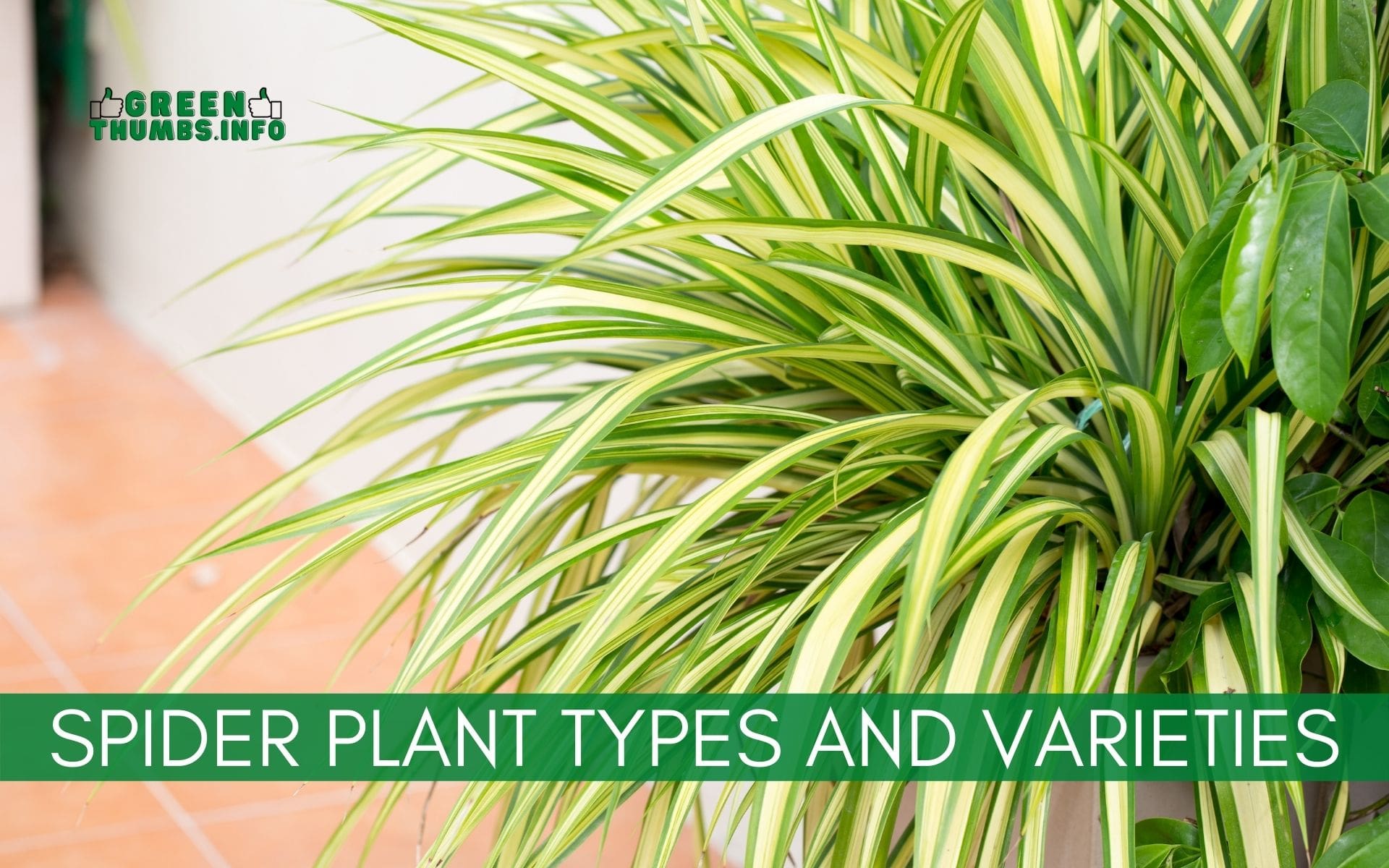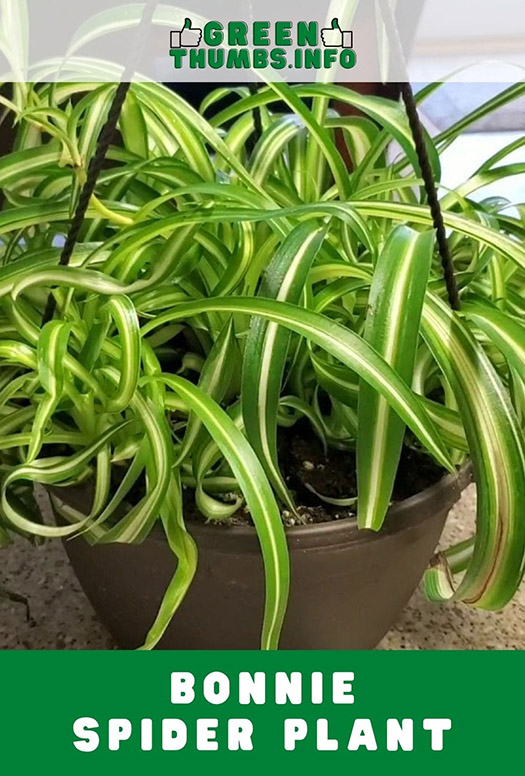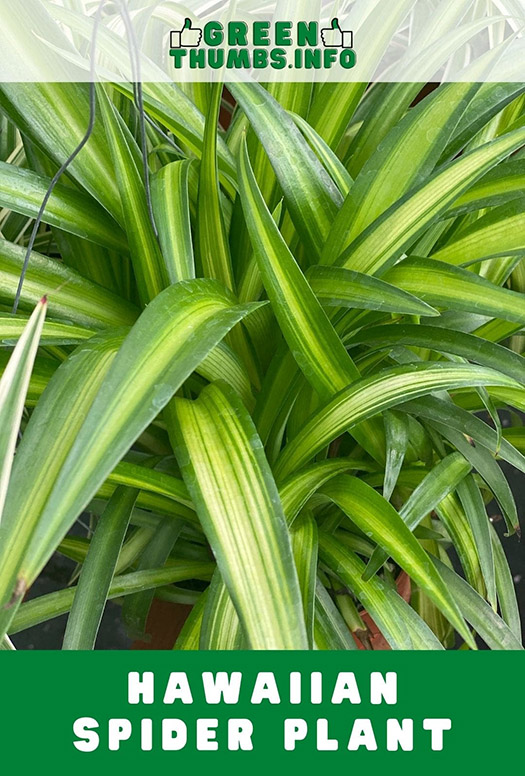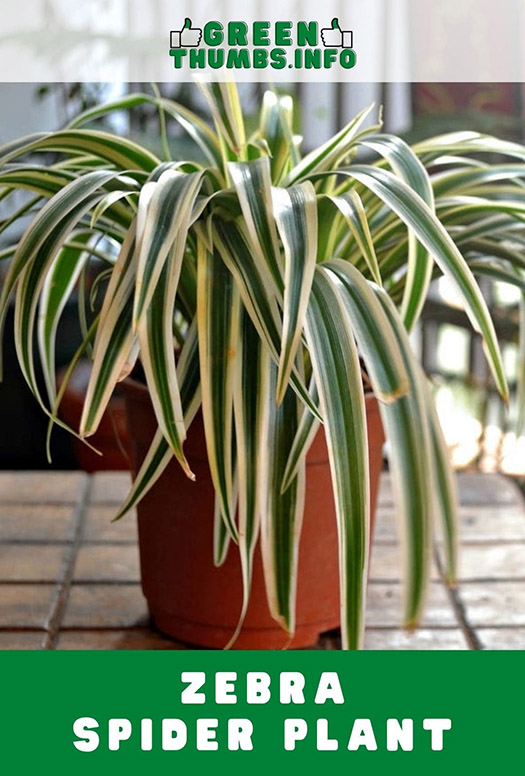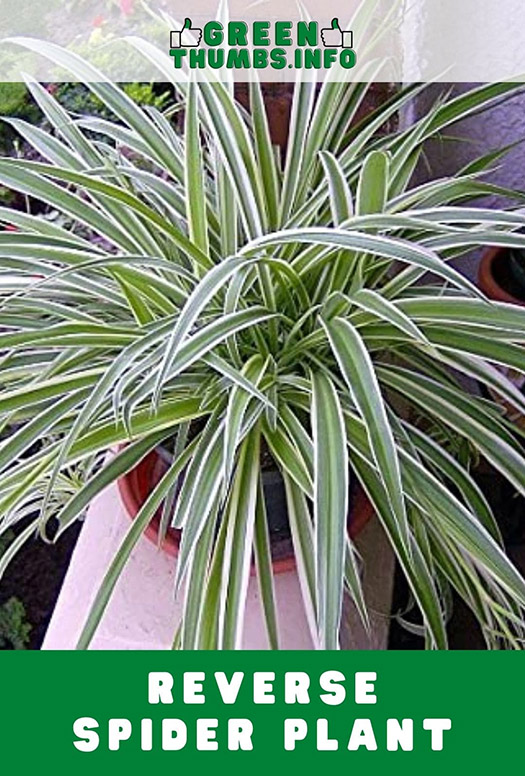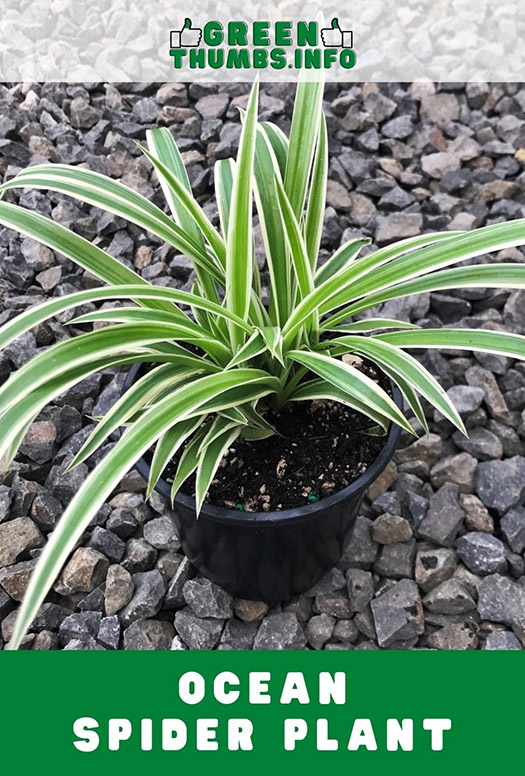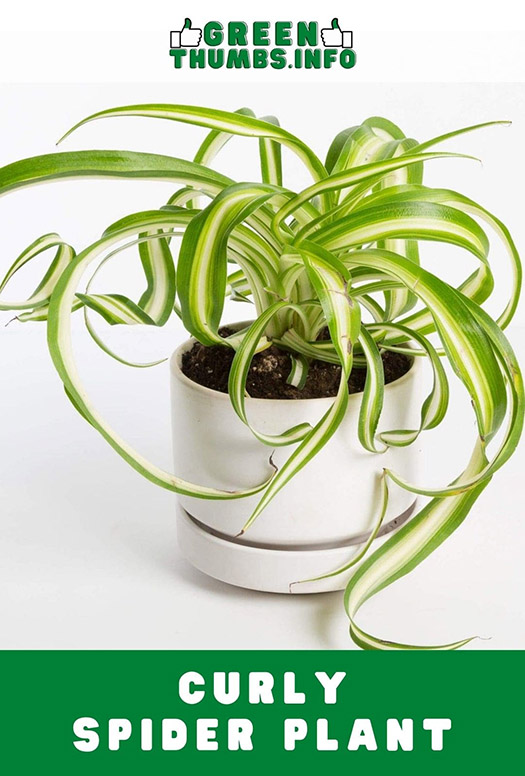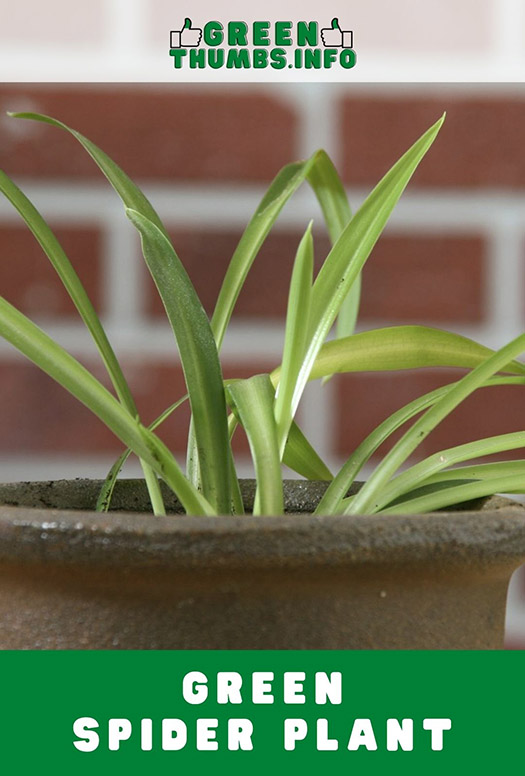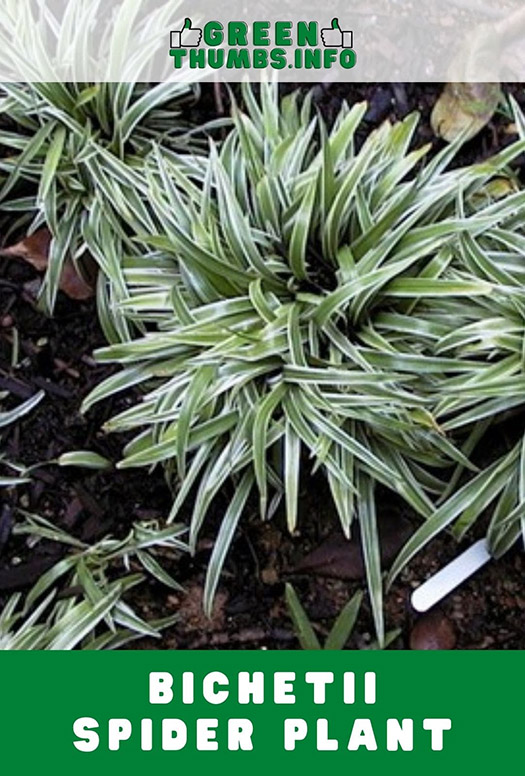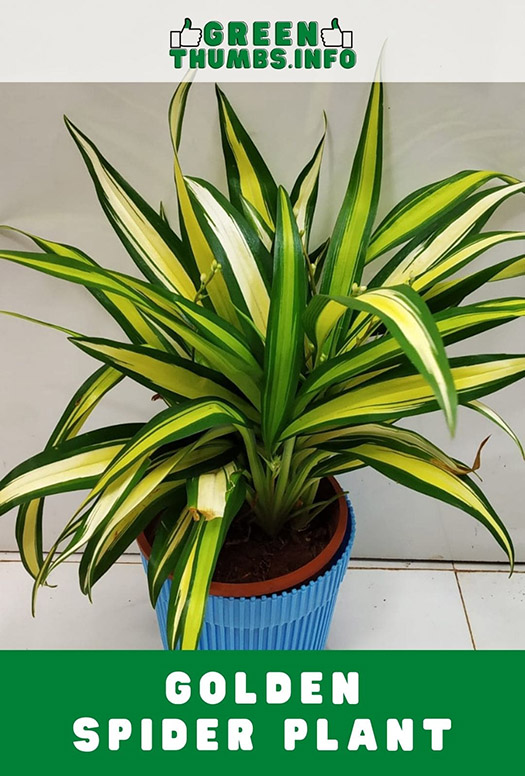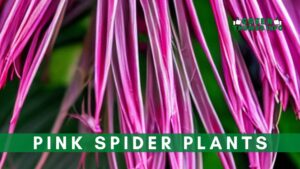Spider plants are a type of house plant that can be found in many homes. They are usually easy to maintain and thrive with minimal care.
There are many different varieties of spider plants that also have different characteristics, offering gardeners different options when selecting the perfect one for their home or office.
There is something for everyone in this list of 11 types of spider plants!
What are Spider Plants?
The spider plant (Chlorophytum Comosum) is one of the most common types of houseplants. It is an herbaceous perennial that belongs to the Agavaceae family.
It is also commonly known as; Ribbon Plant, Airplane Plant, Spider Ivy, or Spider Plant.
The leaves arise from a central point, forming clumps. It gets its name from the tiny baby plants (which resemble spiders) that grow on long, trailing stems.
Spider plants are native to coastal areas of South Africa. They are usually tolerant of neglect and can thrive in many different types of conditions.
What is the Rarest Type of Spider Plant?
The rarest type of spider plant is the Heirloom Green spider plant. It has solid green leaves without the traditional white stripes. It has not been commercially available since the 1970s. However, you may still be able to find them through specialist nurseries or plant traders.
What Are the Different Varieties of Spider Plant?
There are many different types of spider plants available to choose from. Here is a list of 11 of the most popular varieties:
1- Variegated Spider Plant (Chlorophytum Comosum)
This is the most traditional and most common type of spider plant. It features larger, wider leaves with creamy and broad vertical stripes. It can reach a length of 1-2 feet (30 cm – 60 cm).
The Variegated Spider Plant is also one of the easiest types of spider plants to maintain. It thrives in full to partial sunlight and well-drained soil.
Be careful not to overwater your plant, otherwise, it will cause its leaves to turn yellow and eventually die.
2- Bonnie Spider Plant (Chlorophytum Comosum)
Also known as Curly or Bonny Spider Plant. Bonnie is very similar to the Variegated Spider Plant, except for its curly leaves.
The leaves are fairly thin and strap-shaped with long stalks (petioles), giving them a unique appearance.
Bonnie spider plants can reach up to 18 inches (45 cm) in length. They require very little maintenance and sunlight, making them perfect for bathrooms and other closed-off spaces.
3- Hawaiian Spider Plant (Chlorophytum Viridescens)
The Hawaiian spider plant is a small, compact type of spider plant. It has glossy green leaves with clusters of baby plants on runners that trail over the soil surface.
The Hawaiian variety is also commonly known as Golden Glow. this variety isn’t suitable for hanging baskets because it’s so small – hence why many people choose to grow it in a pot or in the soil.
It only reaches a maximum height of about 6 inches (15 cm) and can spread out to 12 inches (30 cm) wide, making it an ideal variety for small spaces. It is also one of the hardiest varieties and ideal for beginners.
4- Zebra Spider Plant (Chlorophytum Laxum)
The zebra spider plant features long, twisted leaves that give it a unique appearance. Its leaves are cream and green and feature dark brown to black stripes running the length of each leaf.
This is one of the most difficult varieties to grow and maintain indoors. The Zebra spider plant requires bright light and high humidity to achieve its full potential, which is why it only grows up to 10 inches (25 cm) tall. It is a perfect variety for hanging baskets because the leaves have an interesting twisted pattern and the growth is neat and tidy.
5- Reverse Spider Plant (Reverse Variegatum)
This variety has a soft yellow edge with a dark green center. The leaves are fairly wide and strap-shaped, but thinner than those found on the Bonnie Spider Plant. It can reach a maximum height of 2 feet (60 cm) and a width of 3 feet (90 cm).
The Reverse Spider Plant has similar care requirements to the Variegated Spider Plant. Although it thrives in full sunlight, this variety can tolerate some shade. Too much sun will dry out the leaves and burn them, while too little light causes them to become green all over.
6- Ocean Spider Plant (Chlorophytum Comosum)
The ocean spider plant is another variety of spider plant that requires very low maintenance and is easy to care for. It is similar to the standard Chlorophytum Comosum but has finer, narrower leaves. Its leaves are green with creamy white edges, resulting in an interesting pattern on each leaf.
This variety grows easily in partial sun to full shade. It’s also sensitive to over-watering, so only water the Ocean spider plant when dry.
7- Curly Spider Plant (Chlorophytum Comosum)
As the name suggests, Curly spider plants have curly leaves similar to the Bonnie variety. The leaves curl around and overlap one another, giving them a curly appearance.
It can be grown in full or partial sun and really looks nice grown in a hanging pot. Curly spider plants are also more tolerant of heat and dry air, making them perfect for the living rooms and bedrooms.
8- Heirloom Green Spider (Chlorophytum Comosum)
The Heirloom Green Spider is a rare green spider plant variant. Its long, wide leaves are dark and glossy, and beautiful for indoor use. However, the Heirloom Green Spider is a tricky plant to grow and maintain indoors. It prefers bright light but will tolerate some shade. It cannot survive poor indoor lighting, which leads to weak growth and brown patches on the leaves.
This variety has not been commercially available since the 1970s and is therefore very rare to find.
9- Bichetii Grass (Chlorophytum Laxum)
Bichetii Grass is one of the few spider plant varieties that produce flowers. It is also known as; Siam Lily, False Lily Turf, and Wheat Plant.
Although it’s a low-maintenance plant, it requires more light than most spider plants.
Bichetii Grass features long narrow leaves that are rich green in color and white stripes that run from top to bottom. It only reaches a maximum height of 12 inches (30 cm) and a width of 2 feet (60 cm).
10- Angel Hair Spider Plant (Chlorophytum Vittatum)
The White Angel spider plant is another variety that features white stripes running the length of its leaves. Its leaves are green with creamy white stripes.
Angel Hair spider plants are one of the easiest varieties to grow and maintain indoors. They can be propagated in cups of filtered water until they are ready to be transferred to a pot. After that, they require very little effort or care and can thrive in low-light conditions.
Angel Hair spider plants grow up to 14 inches (35 cm) high and wide. They prefer bright light but can also survive in full shade.
11- Golden Spider Plant (Chlorophytum Pandanus)
The Golden Spider Plant is a beautiful, low-maintenance plant that will be right at home in your collection. Its leaves have a yellow stripe running down the center and a dark green margin.
Golden spider plants grow to 12 inches (30 cm) high and wide, making them perfect for small patios or balconies. They prefer bright light but can also handle some shade.
They produce long, thin, and slightly arched foliage that can be grown upright or potted as ground cover.
How Many Varieties of Spider Plants Are There?
There are over 200 different varieties of spider plants (Chlorophytum Comosum) out there! The main difference between most varieties is the size and color of leaves.
The varieties can be divided into the following three main categories:
Comosum- Strap-shaped leaves, smooth on the underside, petiole almost always present.
Bipindense- Broad, similar to strap-shaped leaves but with a short stalk (petiole), no striping on the underside of the leaf.
Sparsiflorum- Broad leaves that narrow to the base, usually lack a petiole. Leaves are striped on the underside of the leaf.
Non-Variegated (Solid Green Leaves): The spider plants in this category are the most common and most popular. The leaves are solid green and range in size from 4 to 6 inches (10 cm – 15 cm) long. There are many different types of solid green leaves, with differences in leaf lobes, width, plant growth, and the number of babies they produce on runners.
Variegated Leaves (Striped Leaves): The spider plants in this category feature leaves that have white, cream, or yellow stripes. The leaves may be solid or mottled with a variegated pattern and can be either upright or twisted. Some varieties of spider plants have deeply lobed leaves that resemble a fern leaf.
These two categories encompass all of the different types of spider plants that can be found in nurseries. Some varieties will have a mixture of solid green leaves and variegated leaves, resulting in an interesting pattern on each leaf.
How to Identify Spider Plants?
Spider plants are relatively easy to identify because they feature long, thin leaves that drape down from a central stem. In addition, the ends of their leaves are often rounded or curved.
They have a minimal presence and can be overlooked among other plants. Therefore, it may take some time to identify them as spider plants because they do not stand out as much as other varieties.
Final Thoughts
There you have it! The 11 most popular types of spider plants available. You can now identify them easily by their leaves, height, flower color, and whether or not they produce flowers.
If you’ve never grown spider plants before, I highly recommend giving them a try. They are relatively easy to grow and maintain indoors. Just be sure to choose the right variety for your region and growing conditions.
Good luck and happy gardening!

